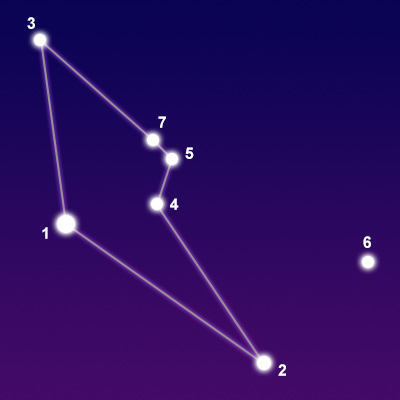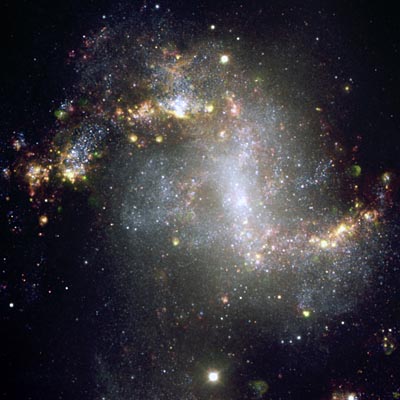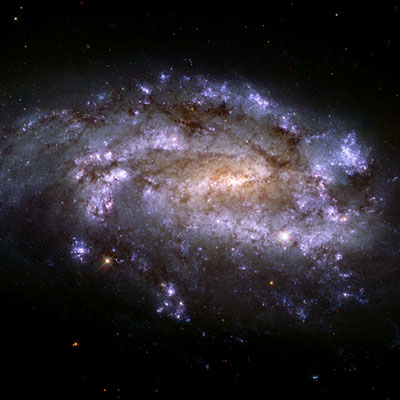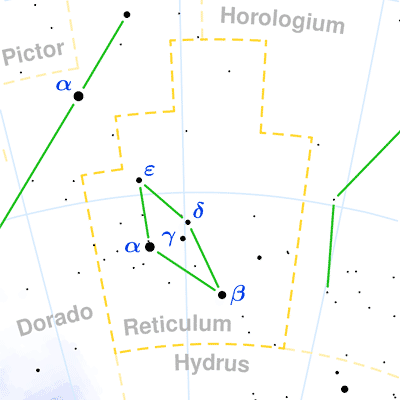Pronunciation:
(ree-TIK-u-lum)Abbreviation:
RetGenitive:
ReticuliRight Ascension:
4 hoursDeclination:
-60 degreesArea in Square Degrees:
114Crosses Meridian:
9 PM, December 30Visible Between Latitudes:
20 and -90 degreesThe constellation Reticulum, the reticle, is located in the southern hemisphere of the sky. It is completely visible at latitudes south of 23 degrees north from October through December. It is best seen in northern latitudes in January. It is a very small constellation filling an area of only 114 square degrees. This makes it the seventh smallest constellation in the night sky. It is bordered by the constellations Dorado, Horologium and Hydrus.
There are no myths associated with Reticulum. It is one of 14 southern constellations named by the French astronomer Abbé Nicolas Louis de Lacaille in the 18th century. Its name means “the reticle” in Latin. It represents a small net of corsshairs on the eyepiece of a telescope that is used to measure the positions of stars. The constellation was originally introduced by the German astronomer Isaac Habrecht II on a celestial globe he published in 1621. He originally named the constellation Rhombus. Lacaille renamed it to le Réticule Rhomboide to commemorate the reticle in his telescope eyepiece. The name was later Latinized to Reticulum when Lacaille published his star catalog.

points of interest below © Sea and Sky
Beta Reticuli
Epsilon Reticuli
Gamma Reticuli
Delta Reticuli
Kappa Reticuli
Iota Reticuli
N/A
N/A
N/A
N/A
N/A
N/A
Triple Star System
Double Star
Red Giant Star
Red Giant Star
Binary Star System
Orange Giant Star
3.84
4.44
4.48
4.56
4.71
4.97
Reticulum is a fairly dim constellation with no stars brighter than magnitude 3. The brightest star in the constellation is Alpha Reticuli with a visual magnitude of only 3.32. It is a yellow giant star located approximately 162 light years from Earth. The second brightest star is Beta Reticuli with a magnitude of 3.84. It is a triple star system whose primary member is an orange giant star. This system lies about 100 light years away. The third brightest star is Epsilon Reticuli with a magnitude of 4.44. It is a double star consisting of an orange subgiant and a white dwarf. This system is located 60 light years from our solar system.
Reticulum contains no Messier objects but does contain a couple of notable deep-sky objects. The Topsy Turvy Galaxy (NGC 1313) is a barred spiral galaxy which is also a starburst galaxy. It has an uneven shape and its axis of rotation is not located at its center. NGC 1559 is another barred spiral galaxy that is about seven times smaller than our own Milky Way Galaxy. It contains regions of intense star formation. These objects are extremely dim and can only be seen with large telescopes.

© ESO, Henri Boffin / CC BY 4.0

© Judy Schmidt from USA / CC BY 2.0




